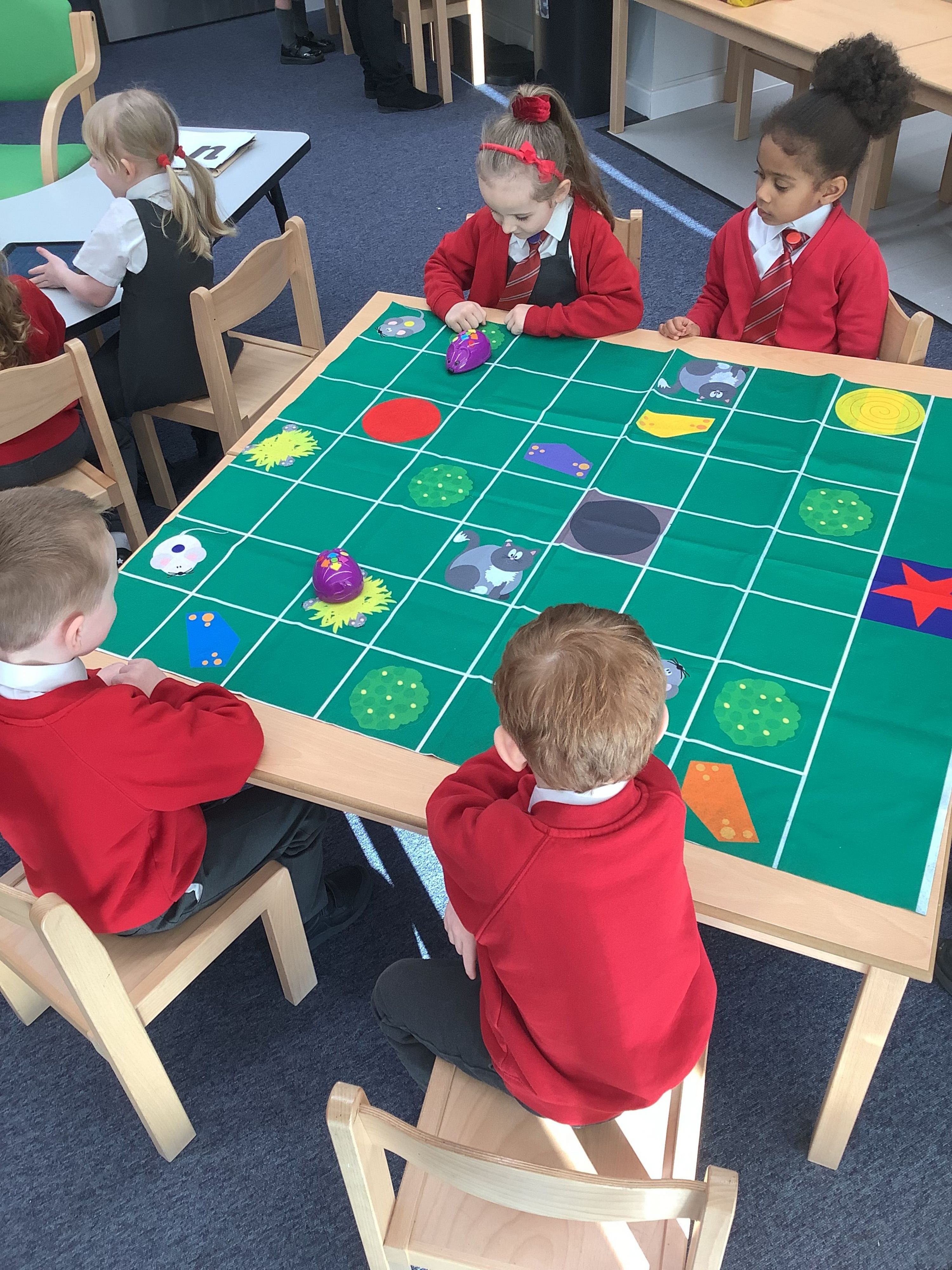Computing
Computing Curriculum Aims
At Anker Valley Primary Academy, we aim to prepare our children for a rapidly changing technological world. Technology is everywhere and will play an important role in our pupils’ lives now and in the future. We aim to model and educate pupils on how to use technology positively, responsibly and safely through our computing lessons and within the wider curriculum.
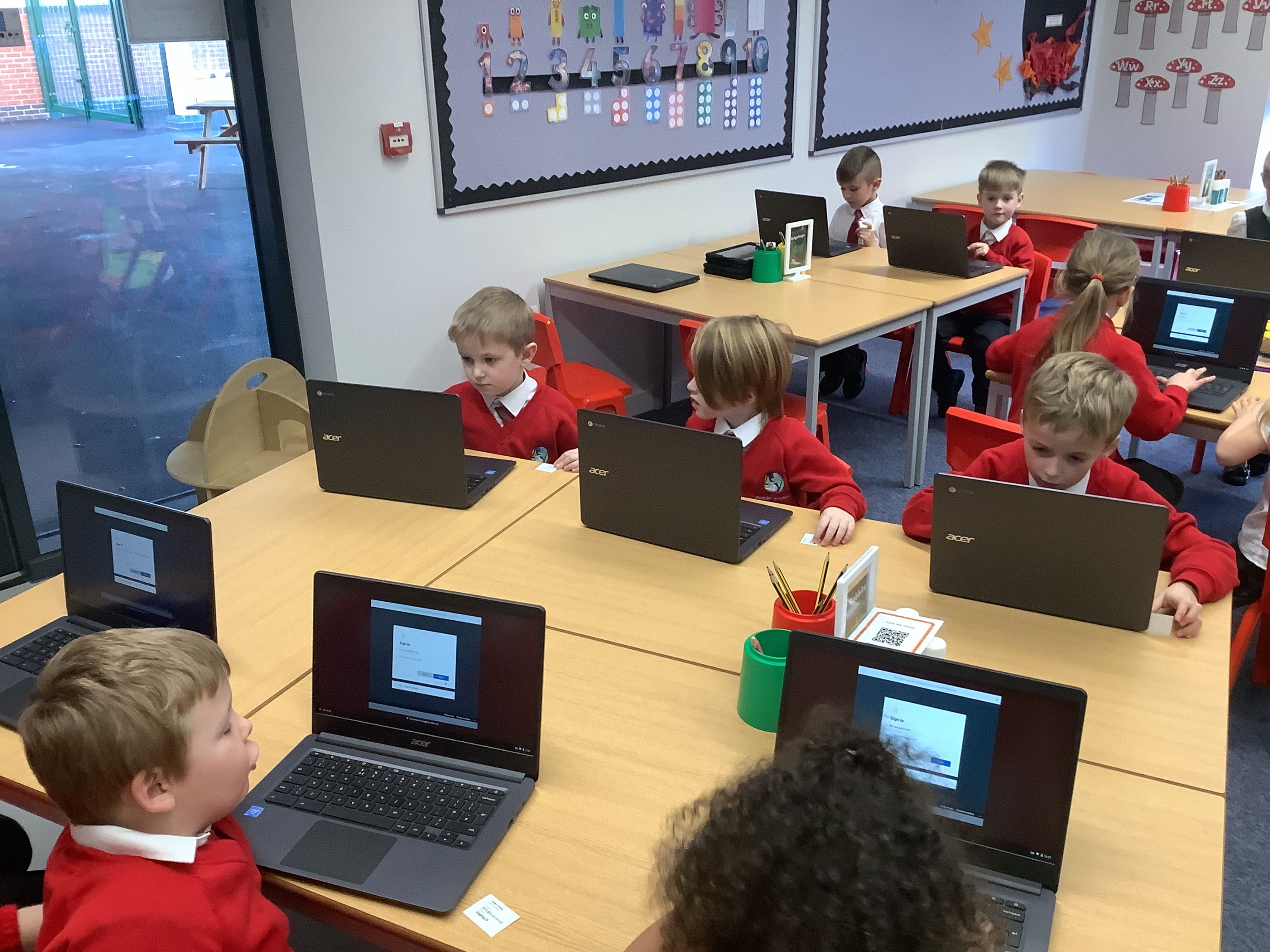
We choose to use Teach Computing because it is a powerful, comprehensive, inclusive and accessible programme aligned to the National Curriculum and beyond, with full schemes of work intended to facilitate teachers in achieving the very best outcomes for pupils, regardless of starting points. It exposes pupils to a wide variety of computing knowledge, skills, experiences and real-life scenarios which supports the notion of Cultural Capital; providing the foundations that lead to well-rounded global citizens. The units have been built around an innovative progression framework where computing content has been organised into interconnected networks called learning graphs.
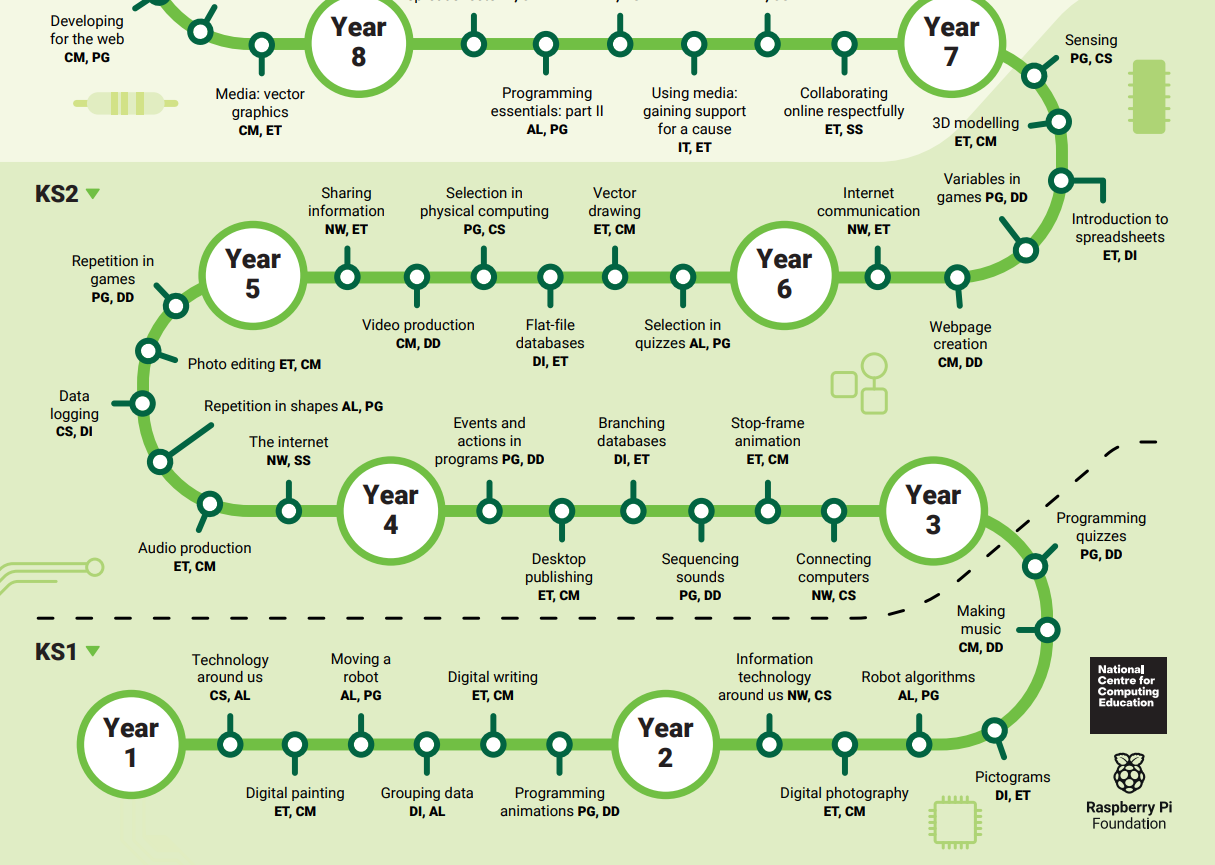
The approach
Coherence and flexibility
The Teach Computing Curriculum is structured in units. For these units to be coherent, the lessons within a unit must be taught in order. However, across a year group, the units themselves do not need to be taught in order, with the exception of ‘Programming’ units, where concepts and skills rely on prior learning and experiences.
Knowledge organisation
The Teach Computing Curriculum uses the National Centre for Computing Education’s computing taxonomy to ensure comprehensive coverage of the subject. This has been developed through a thorough review of the KS1–4 computing programme of study, and the GCSE and A level computer science specifications across all awarding bodies. All learning outcomes can be described through a high-level taxonomy of ten strands, ordered alphabetically as follows:
Algorithms — Be able to comprehend, design, create, and evaluate algorithms
Computer networks — Understand how networks can be used to retrieve and share information, and how they come with associated risks
Computer systems — Understand what a computer is, and how its constituent parts function together as a whole
Creating media — Select and create a range of media including text, images, sounds, and video
Data and information — Understand how data is stored, organised, and used to represent real-world artefacts and scenarios
Design and development — Understand the activities involved in planning, creating, and evaluating computing artefacts
Effective use of tools — Use software tools to support computing work
Impact of technology — Understand how individuals, systems, and society as a whole interact with computer systems
Programming — Create software to allow computers to solve problems
Safety and security — Understand risks when using technology, and how to protect individuals and systems
The units for key stages 1 and 2 are based on a spiral curriculum. This means that each of the themes is revisited regularly (at least once in each year group), and pupils revisit each theme through a new unit that consolidates and builds on prior learning within that theme. This style of curriculum design reduces the amount of knowledge lost through forgetting, as topics are revisited yearly. It also ensures that connections are made even if different teachers are teaching the units within a theme in consecutive years.
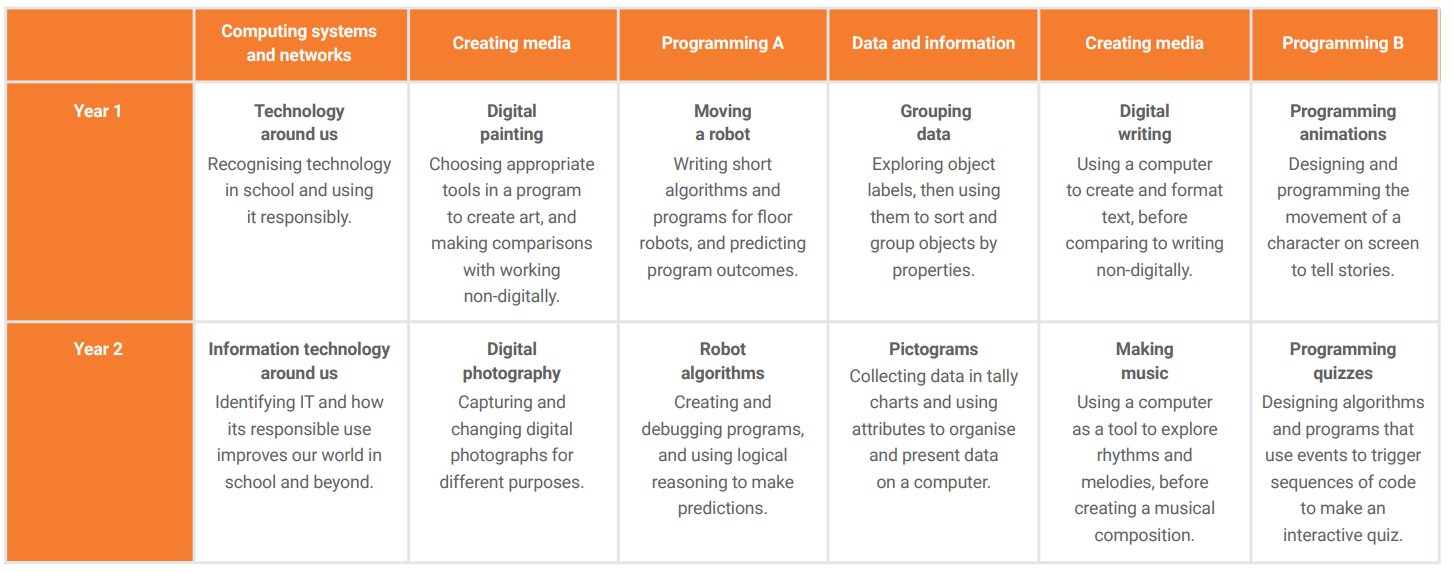
Substantive and disciplinary knowledge in computing
Substantive knowledge in computing is understanding how to use technology, how to be safe and knowing how to program. This is developed through deliberate practice and by children applying their knowledge of how to be computational thinkers.
Disciplinary knowledge in computing is the use and interpretation of substantive knowledge in order to develop original digital content and programs.
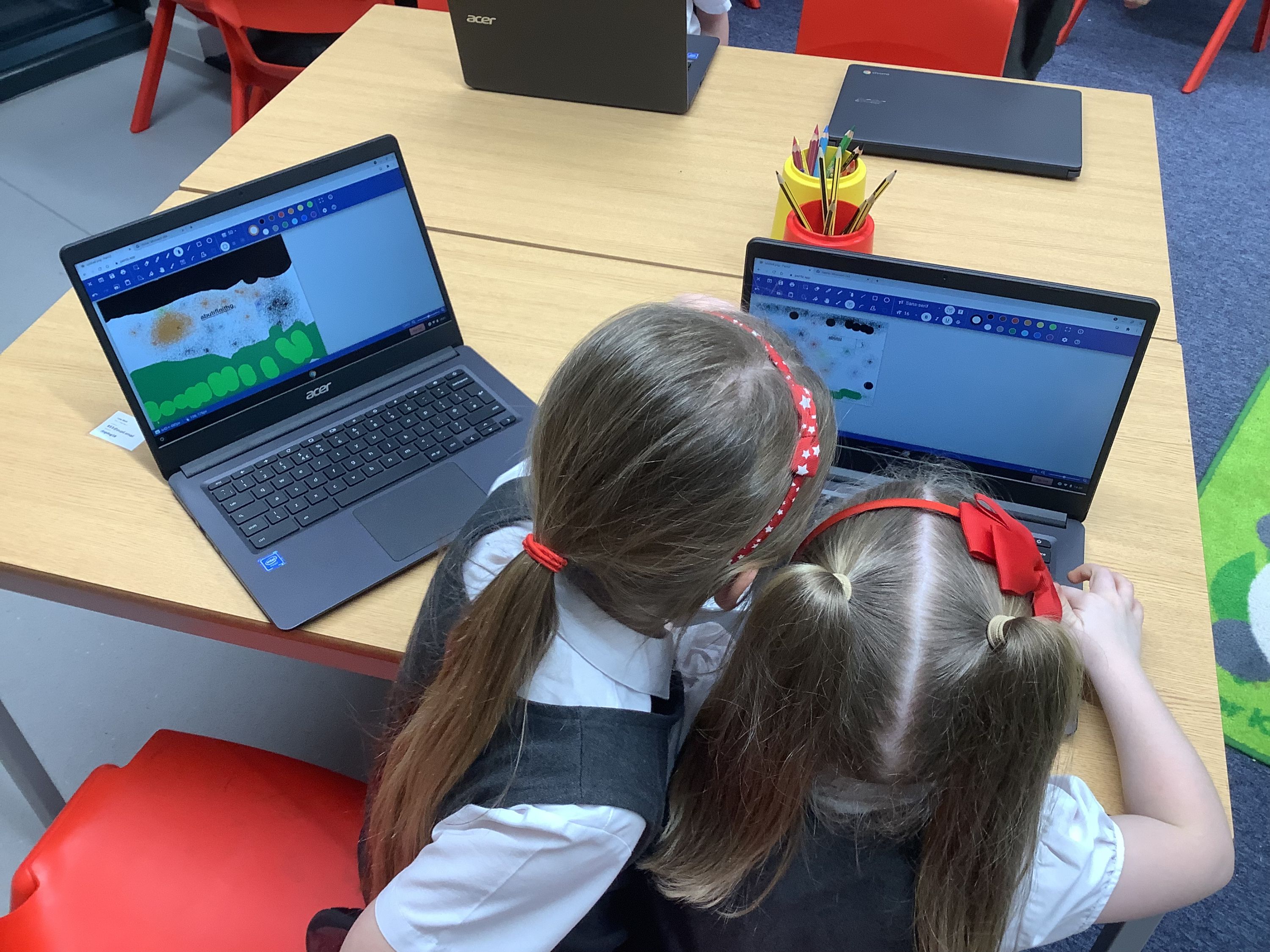
Online Safety
We greatly value the use of technology in a safe and respectful manner. As well as teaching children about online safety through their computing lessons, we also take part in the National Safer Internet Day every year, to positively reinforce the key messages around staying safe online with pupils and parents. This allows us to implement an effective and engaging approach to online safety while meeting our safeguarding duties as outlined in the latest KCSIE (Keeping Children Safe in Education) guidance. Parents are made aware of online safety issues through the school website, newsletters, home learning activities and in-school workshops.
Computing in EYFS Reception
Although the EYFS Framework (2021) does not make explicit reference to computing, at Anker Valley Primary Academy we recognise that learning about computing and technology is important for our Reception children. This will ensure that pupils enter Year 1 with a foundational of knowledge of computing. Computing in Reception does not mean typing out a Word document or creating a code, our Computing scheme for Reception is centred around activities that focus on building children’s listening skills, curiosity, creativity and problem solving, whilst introducing them to Purple Mash programmes and features, such as:
- 2Paint a Picture for creating digital pictures
- Little Wandle Ebook stories to read
- Slideshows for exploring topics of interest
- White Rose Mathematics App
- Beebots
Computing at Anker Valley in Reception means:
- Taking a photograph with tablet or camera
- Watching video clips and slideshows to support their learning across the curriculum
- Listening to music and using digital technology to create their own music
- Recording their voice (for singing, storytelling or building sentences verbally)
- Following and creating basic instructions to make objects on screen move or direct vehicles
- Exploring maps, jigsaws and accessing a variety of games to support their learning across all areas of learning
- Searching for information on the internet
- Using digital technology to support their learning (by planning models or recording their ideas, for example)
- Exploring mechanical and digital toys
Our Reception Computing Curriculum is designed to enable our youngest pupils to develop a familiarity with technology, digital equipment and vocabulary and is planned across all seven areas of learning (Communication and Language; Personal, Social and Emotional Development; Physical Development; Literacy; Mathematics; Understanding the World; and Expressive Art and Design). It is a flexible approach to meet the needs and interests of the children and to support children’s development of knowledge, skills and understanding.
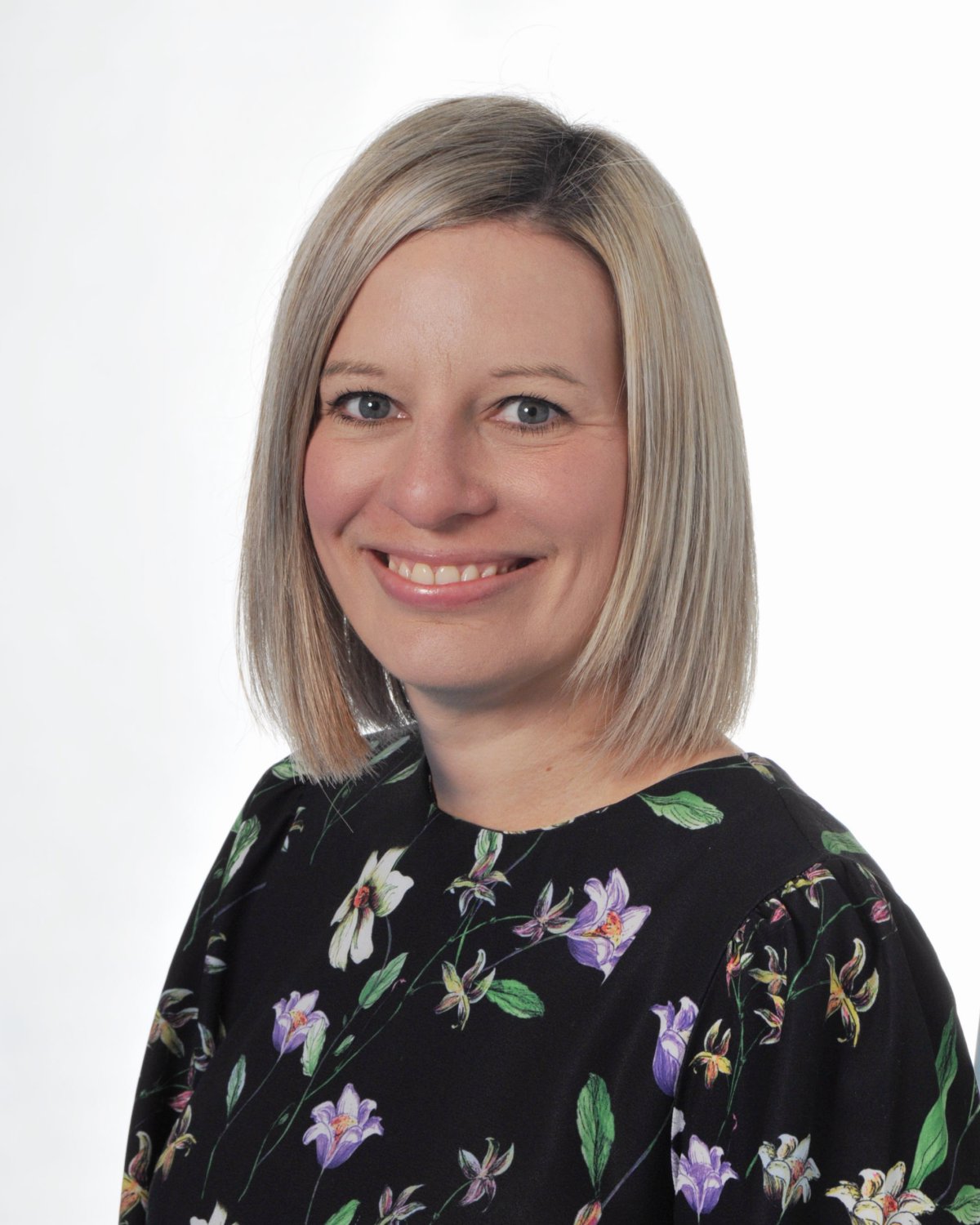
Mrs Natalie Horlor is the Curriculum Lead at Anker Valley.



